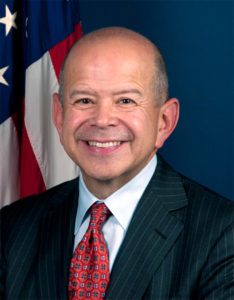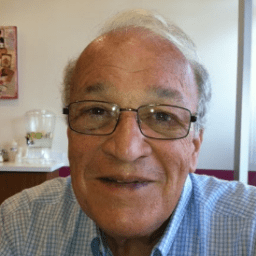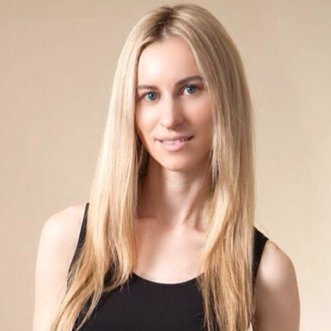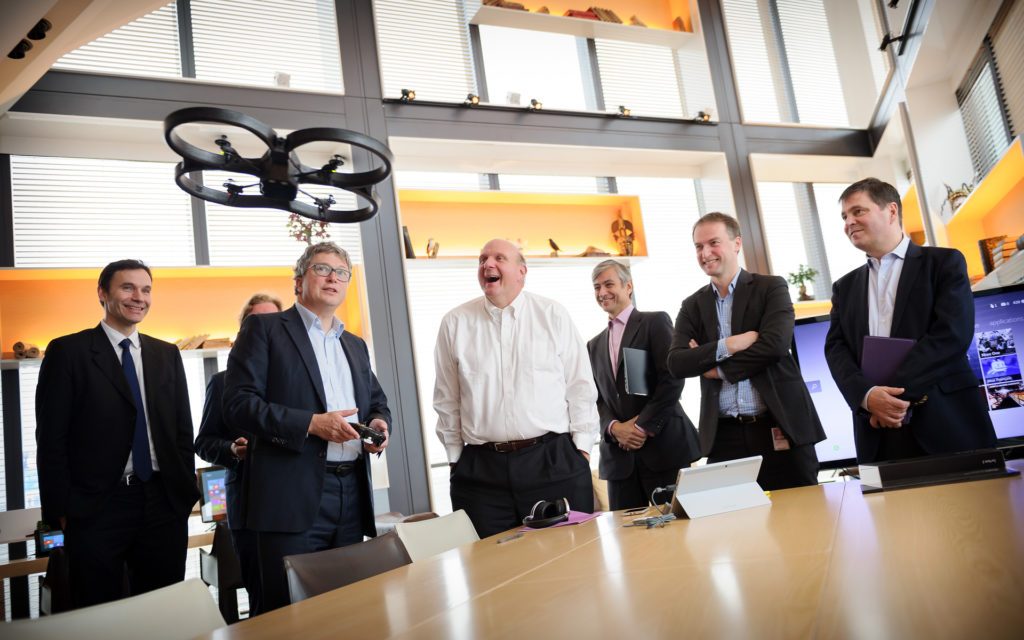If you’re new to the world of drones then firstly, where have you been? Second, you’ve got a lot of catching up to do. Even those who cover the industry can barely believe the speed of innovation that’s occurred in recent years.
Relaxed legislation has helped an already blossoming commercial industry reach new heights; sectors from agriculture to real estate and everything in between are being revolutionized by aerial technology. On the consumer side, we’ve witnessed the emergence of affordable, high-quality aerial photography quadcopters. Oh, and drone racing is now a thing too.
So who are the pioneers responsible for these seismic advances, and which individuals look set to influence the drone industry in the years to come? Here’s our rundown of the most influential people in the drone industry…
Frank Wang
DJI founder Frank Wang is the drone industry’s first self-made billionaire. And looking at how much he has shaped the landscape for both consumer and commercial drones, it’s easy to see why. Wang brought DJI to life from his university dorm room back in 2006. In the decade that followed he not only introduced the concept of an aerial photography drone to market, but also set the bar so high that competitors are still struggling to counter DJI’s domination.

DJI has been compared to Apple on many occasions. The branding is slick and its drones are well ahead of the majority of its rivals in terms of functionality and features. Wang is also reminiscent of former Apple front man Steve Jobs. He’s notoriously abrasive and known for the ruthlessness with which runs his business.
Speaking with Forbes, he said that despite an appreciation of Steve Jobs’ ideas, “there is no one I truly admire. All you need to do is to be smarter than others. There needs to be a distance from the masses. If you can create that distance, you will be successful.”
With leading drones across the spectrum, from consumer to prosumer to full-on professional – there’s little doubt that Wang has created an industry-leading giant that could dominate the drone market for years to come.
Michael Huerta
Without wishing to be too US-centric, there’s no doubt the market for consumer and commercial drones in the States is the largest in the world. With that in mind, the man in charge of governing all that flight time is FAA chief Michael Huerta has a lot of sway in the drone business. No individual has shaped the USA’s relationship with drones in recent years as much as this man.
As FAA administrator, Huerta has been responsible for two huge drone industry initiatives to date. The first is registration for recreational pilots, and the second is the implementation of the Part 107 rule, which effectively opened the door to commercial operations – providing pilots had obtained accreditation from the FAA.

Speaking at CES 2017, Huerta said, “I think it’s important to point out that the progress we’ve made; we’ve made because we have done it together. The progress we made last year is a great start but I think we all know it is just the beginning,”
Whether you think that Huerta has gone too far, that the FAA hasn’t done enough or acted as quickly as it should, it’s difficult to argue with his assumption that progress has been made. Although Huerta’s position as FAA administrator is due to run until 2018, doubt over his role has arisen after President Donald Trump discovered he wasn’t a pilot.
“Is the gentleman who’s the head of the FAA right now not a pilot?” Trump reportedly asked. “I’d like to find out because I think it maybe would be good to have a pilot, like a really good pilot who knows what’s going on … And I would think you need a very sophisticated person in that job and … frankly, being a pilot would be helpful.”
Nick Woodman
Now, before you scroll down to the bottom to write a comment about how GoPro’s Karma drone has been a total let down up until this point, don’t. GoPro CEO Woodman actually makes this list because his company helped to start the aerial photography revolution. Without GoPro’s action cameras, DJI would never have got off the ground (figuratively), while plenty of other drone manufacturers have either relied on GoPro’s cameras or continue to do so.

Plenty of recent startups, including Staaker and AirDog, are using GoPro cameras so that they can stick to what they do best: developing drones.
So there you have it. Although Nick Woodman’s dreams for the GoPro Karma may not have come to fruition just yet, he’s without doubt one of the drone industry’s most influential people.
Sally French
It’s easy to think that drone influencers have to be directly impacting upon drone hardware, software or regulations. But that view does a disservice to the media which helps to shape public opinion on the industry. There are plenty of tech journalists out there who do a great job of informing on the latest news across the world of drones, but few do it better than Sally French.

Also known as the Drone Girl, French speaks at events around the world, has had drone-related work published in outlets including The Wall Street Journal, MarketWatch, NPR, CNN, The BBC, Forbes and The Economist, and has done more than most to promote positive relations between the UAV industry and the general public.
Nicholas Horbaczewski
Few stories represent the meteoric rise of the drone industry better than that of the Drone Racing League. DRL founder Nicholas Horbaczewski was busy helping turn events company Tough Mudder into a global brand when he first came across drone racing in 2015. He quickly saw the potential for a professional league and set about making that ambition a reality. DRL’s first season was broadcast on YouTube, ESPN, Sky and ProSieben, with short, edited episodes providing the same FPV view that pilots were experiencing.

And while the series’ popularity grew online, plenty of work was continuing behind the scenes; DRL had to build its own drones and racing technology to stay ahead of the competition. Pretty quickly major broadcasters signed up to take drone racing to the masses and DRL’s first season ended up consisting of five races that were broadcast across 150 hours of content to more than 28 million people.
Nicholas Horbaczewski spoke with DroneLife about DRL’s last twelve months. “We’re thrilled to have experienced an unprecedented amount of growth over this past year, solidifying FPV racing as a mainstream sport. This week, Fast Company named DRL as one of the World’s Most Innovative Companies of 2017 and ranked DRL as this year’s 3rd most innovative sports companies. It is a massive accomplishment for a year-old startup that has now joined the ranks of Amazon, Google, and Apple.”
Speaking with Business Insider, Horbaczewski admits that there have been challenges along the way. “There were many dark days where we thought this wasn’t going to be possible,” he said. “There were moments of greatness, there was a moment of excitement where all the tech worked for four seconds in a row, or one drone overtook another one, or someone was trash talking someone else, overtook them, and won a race. And those moments of greatness are what you see on TV today in the professional league.”
As DRL heads towards its second season, fans can look forward to a global six-race tournament set to play out between Miami and London. It will be televised in June on Sky Sports and ESPN, and broadcast in over 75 countries.
Horbaczewski makes the influential list because DRL – although not the only racing organization to have signed big media deals for future races – has without doubt set the standard for competitors to follow and already introduced millions to the sport of drone racing.
Dan Burton

DroneBase is a relatively young platform with loads of potential. The premise is simple: to connect a community of skilled pilots to aerial photography jobs. In its own words, DroneBase is “A large network of drone pilots, highly engaged by streams of commercial and creative activities, creating value for the new economy.”
In its first year of operation, DroneBase has paid its pilots over $1,000,000 and completed around 10,000 separate jobs. The DroneBase marketplace is expected to see continued growth throughout 2017.

Speaking with DroneLife, DroneBase founder Dan Burton said, “With more than 10,000 commercial drone missions completed to date, DroneBase is excited to make “air support” from a drone available to every business for a few hundred dollars per flight and a 48 hour turnaround anywhere in the U.S., all delivered via the DroneBase Cloud.
With over $1m paid to the DroneBase pilot network, we are proud to be providing full-time and part-time work to the best professional drone pilots all over the world, and are happy to be recognized as a leader in the drone industry.”
Brian Krzanich
Intel CEO Brian Krzanich is a much more influential figure in the drone industry than many people realize. Although the company he controls doesn’t necessarily compete with the likes of DJI (not yet anyway) – Intel has made a number of interesting acquisitions in the drone space and is arguably going to be the most influential company in the industry over the coming years.

A few of Intel’s business interests include:
- The Real Sense technology used in Yuneec’s obstacle avoidance systems
- Ownership of Movidius, a visual sensing company responsible for much of DJI’s collision avoidance technology
- Aerial light shows, including the ‘Shooting Stars’ the lit up the Super Bowl halftime show
- Investment in commercial drone giant PrecisionHawk
- Investment in drone software company Airware
- Its own recently-released drones: The Aero and the Falcon 8
Before Christmas, we had an interview with General Manager of the UAV segment at Intel Corporation, Anil Nanduri. He said: “We’re not detailing our product roadmap plans. But, generally speaking, Movidius’ technology in combination with RealSense 3D depth cameras furthers Intel’s push into new smart, connected devices where computer vision and deep learning capabilities in low power, low cost, high-performance solutions are key. We can deliver new solutions for OEM customers across multiple market segments from robotics to security cameras and, importantly, drones.”
It’s clear that Intel has huge ambitions in the drone space.
Brian Krzanich also happens to be chair of the FAA’s Drone Advisory Committee (DAC), putting him in a unique position to influence drone legislation going forward.
John Goglia
Aviation journalist John Goglia is an important conduit between legislative bodies – most notably the FAA – drone enthusiasts and the wider public. His articles for Forbes are often full of insight, even for those that follow the industry closely.

Goglia was among the first to realize and confirm that the FAA’s Part 107 ruling would impact upon a number of recreational flyers, and he covers the industry with the sharp eye of a man with 50 years of aviation experience under his belt.
Interested in an expert take on the latest drone industry news? Follow him on Twitter @crashdetective.
Diana Cooper
Diana Cooper is Vice President of policy and legal at PrecisionHawk. As such, she’s in a unique position to work with the policymakers who shape legislation for the commercial drone industry. Before taking the post at PrecisionHawk, Cooper led the UAS and Robotics Practice Group at law firm LaBarge Weinstein.

She’s a thought leader in robotics and drone law, and has given numerous talks on the subject at venues from Stanford University to NASA.
We asked Diana her thoughts on the state of commercial drone legislation and PrecisionHawk’s contribution to recent developments.
“The introduction of Part 107 in August, 2016 represents a significant move forward for the American drone industry,” she said.
“On the same day that Part 107 came into force, PrecisionHawk was granted the first commercial waiver to fly beyond line of sight. The waiver was granted as a result of the safety case PrecisionHawk established under the FAA Pathfinder Program. The FAA Extension, Safety and Security Act also introduced important provisions, including a research plan for UTM development and deployment.
In addition to substantive regulatory activity at the federal level, this past year was marked by increasing legislative activity at the state and local level, some of which may be pre-empted. In response to the emerging patchwork of state and local regulation of drones, the FAA Drone Advisory Committee (DAC) has set up a task group focused on reviewing the roles and responsibilities of different levels of government in regulating and enforcing drone laws. PrecisionHawk is a member of this task group and is working with stakeholders across the industry to provide some initial recommendations to the DAC at the next meeting in May.”
Henri Seydoux


Understandably, Mr Seydoux was quite hard to get hold of. But we did manage to get some interesting reflections from Parrot vice-president of global sales, Chris Roberts.
“The project of a toy drone piloted by a smartphone took us five years of work. We faced many challenges, but we stuck to the project until its finalization in January 2010, when we introduced our first drone Parrot AR.Drone,” Roberts said.
“Our first drone creation was hovering inside a cage, and its main performance was to stabilize in the air and focus on a fixed point. It was a huge success! The drone was the main attraction of the show [CES 2010] and was the subject of nearly 300 TV reports!”
“When returning to Paris, we were not sure about its true potential as nothing comparable existed; but within six months, we had sold 120,000 drones! We rapidly decided to speed up the development of this activity and expand it to business applications, as we strongly believed drones are ideal work tools to quickly, exhaustively and reliably collect and analyze data.”
“Drones are now in a full swing and development is moving at a rapid pace. Parrot has strong expertise and know-how. Our company is renowned and respected in both consumer and professional drones and we have high ambition in both markets.”
Michael Chasen

“PrecisionHawk is at the stage where the company, as well as the market, has really started to accelerate”, he told DroneLife.
“Now that we have Part 107, companies that previously just had their toe in the water with drone technology know they can deploy drones on a much more massive scale. They want to use these tools to collect better business intelligence so they can make better decisions, and we’re not talking about a one-off where the drone flies over a farm anymore. We’re talking about creating large-scale deployments for actionable business data.
In terms of our direction going forward, we need to not just be looking at developing technology for the needs of this generation, but also for the needs of the next generation. What I bring to the table isn’t so much for PrecisionHawk today, but for where PrecisionHawk needs to go over the next few years.
I have a certain level of operational expertise and experience that can put the company in a great position for the hyper-growth that we’re seeing take place throughout the drone industry.”
Brendan Schulman

Brendan Schulman is VP of policy and legal affairs at DJI. He works with legislatures around the world to find solutions to the problems and challenges posed by drone technology. As well as being an expert on all things drone law, Schulman is a keen aviation enthusiast.
https://twitter.com/DJIGlobal/status/788741911997714433
Malek Murison is a freelance writer and editor with a passion for tech trends and innovation. He handles product reviews, major releases and keeps an eye on the enthusiast market for DroneLife.
Email Malek
Twitter:@malekmurison
Subscribe to DroneLife here.







We are not influential but easy to recognize. We make the DS-30 Drone Strobes
i would add “Casey Neistat” he definitely brought attention to Drones. in Particular DJI.
his audience of subscribers is beyond 6 Million.
now that is what you call “Influential”
Drones for Public Safety only has one name Gene Robinson. You won’t find him on the cover of Forbes cause he’s been flying RC aircraft for search and rescue under RP Search Services as a non-profit since 2008. Gene has been to 30 states five countries and credited for 13 rescues or recoveries using RC aircraft. For public safety he is known as the grandfather of UA SAR.
Drones for Public Safety only has one name Gene Robinson. You won’t find him on the cover of Forbes cause he’s been flying RC aircraft for search and rescue under RP Search Services as a non-profit since 2008. Jeanne has been to 30 states five countries and credited for 13 rescues or recoveries using RC aircraft. For public safety he is known as the grandfather of UA SAR.
What a load of baloney, I can smell the level of experience and knowledge in the author and his audience group. This world you live in where these people influence the real movers of the Drone industry, is sort of a joke..lol
Who picked this list? Again another list of so called experts, some with little to no actual UAS experience.
Hi there Scott,
Thanks for your comment. I picked the list. You’ll notice from the title that the article is related to influence, not expertise. In an ideal world the two would correlate (and to an extent they do), but that’s not always the case in reality.
Thanks,
Malek
i would add “Casey Neistat” he definitely brought attention to Drones. in Particular DJI.
his audience of subscribers is beyond 6 Million.
now that is what you call “Influential”
Thank goodness you did not include the self proclaimed UAV expert that claims to be the Elon Musk of Japan
Not sure how I feel about Michael Huerta
A self funded entrepreneur that created the largest platform in the world as it relates to drones and autonomy. http://dronemedia.com